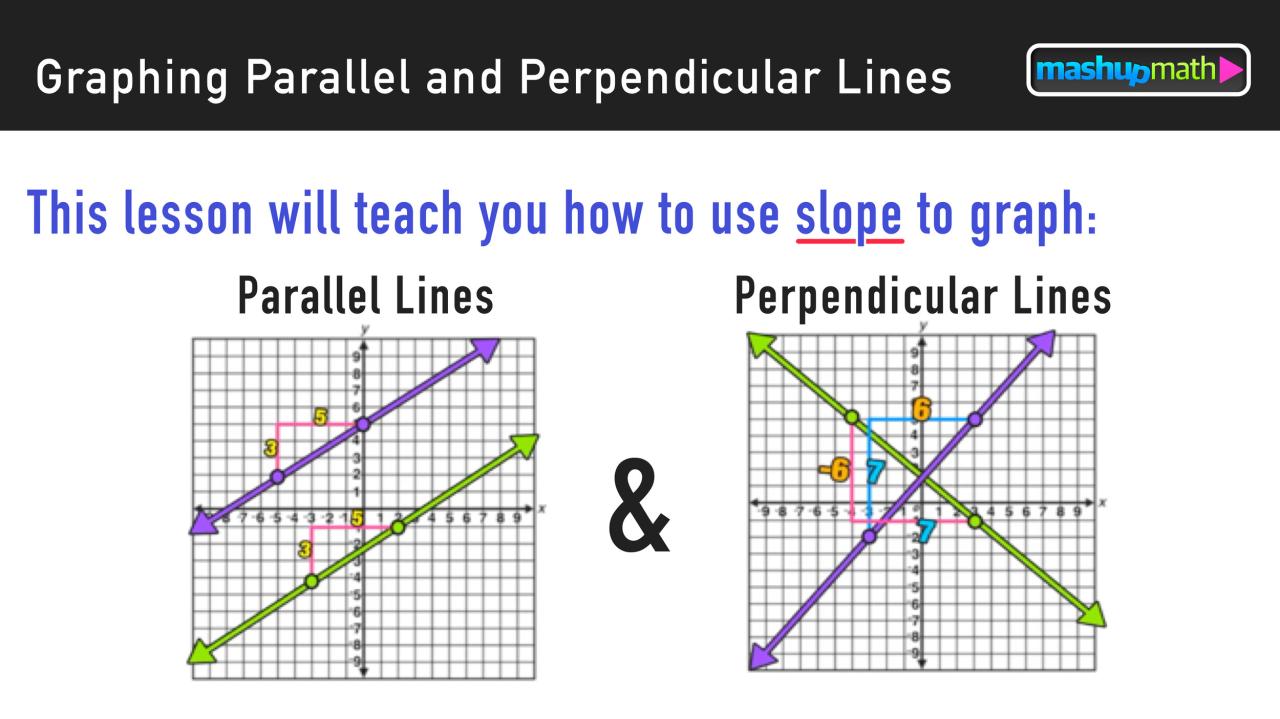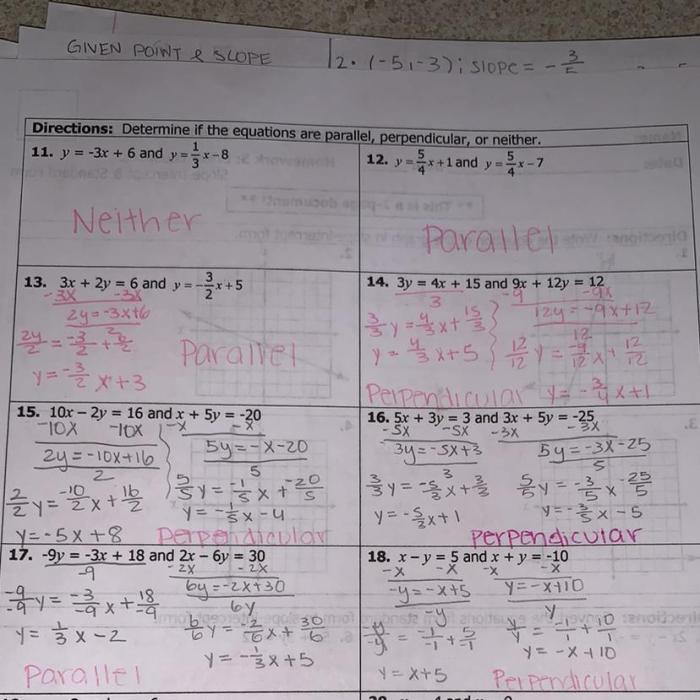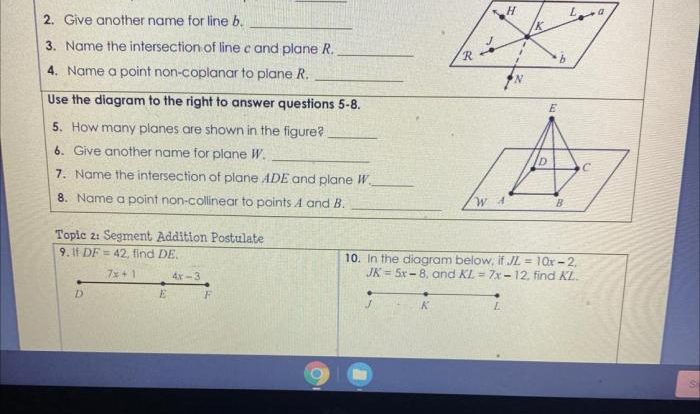Unit 3 study guide parallel and perpendicular lines – Embark on a geometric adventure with our comprehensive Unit 3 Study Guide: Parallel and Perpendicular Lines. Prepare to unravel the intricacies of these fundamental concepts, uncovering their properties, theorems, and real-world applications. Dive into a world where lines interact, forming intriguing patterns and shaping our understanding of space and design.
In this guide, we will explore the defining characteristics of parallel lines, their unwavering parallelism, and the geometric relationships they form. We will delve into the world of perpendicular lines, examining their unique properties and how they intersect to create precise angles.
Our journey will not end there; we will venture into the realm of intersecting lines, discovering the diverse angles they form and the properties that govern their behavior.
Parallel Lines

Parallel lines are straight lines that never intersect, no matter how far they are extended. They are always equidistant from each other, maintaining a constant distance throughout their length.
In real-world scenarios, parallel lines can be observed in various applications. For instance, the rails of a railway track run parallel to each other, ensuring the train’s smooth movement. Similarly, the sides of a rectangle or square are parallel, creating the shape’s characteristic angles and dimensions.
Properties of Parallel Lines
- Parallel lines have the same slope.
- The alternate interior angles formed by a transversal crossing parallel lines are congruent.
- The alternate exterior angles formed by a transversal crossing parallel lines are congruent.
- The corresponding angles formed by a transversal crossing parallel lines are congruent.
Perpendicular Lines
Perpendicular lines are straight lines that intersect at a right angle (90 degrees). They form four right angles when they meet, creating a perpendicular relationship.
Identifying perpendicular lines can be achieved using geometric tools such as protractors or set squares. A protractor can measure the angle between the lines, while a set square can provide a precise 90-degree angle for comparison.
Examples of Perpendicular Lines, Unit 3 study guide parallel and perpendicular lines
- The edges of a cube or rectangular prism are perpendicular to each other, forming the box-like shape.
- The spokes of a bicycle wheel are perpendicular to the wheel’s rim, ensuring a stable and balanced ride.
- The axis of a coordinate plane is perpendicular to each other, creating the familiar x and y axes.
Intersecting Lines

Intersecting lines are straight lines that cross at a single point, forming an intersection. The angle formed by the intersecting lines is known as the angle of intersection.
Different types of angles can be formed by intersecting lines. These include acute angles (less than 90 degrees), right angles (90 degrees), obtuse angles (greater than 90 degrees), and straight angles (180 degrees).
Table: Properties of Intersecting Lines
| Type of Angle | Measure |
|---|---|
| Acute Angle | Less than 90 degrees |
| Right Angle | 90 degrees |
| Obtuse Angle | Greater than 90 degrees |
| Straight Angle | 180 degrees |
Slopes of Parallel and Perpendicular Lines

The slope of a line is a measure of its steepness. It is calculated by dividing the change in the y-coordinate by the change in the x-coordinate along the line.
Parallel lines have the same slope because they maintain a constant vertical distance from each other. Conversely, perpendicular lines have slopes that are negative reciprocals of each other. This means that if one line has a slope of m, the perpendicular line will have a slope of -1/m.
Example
Consider two lines: Line 1 with a slope of 2 and Line 2 perpendicular to Line 1. The slope of Line 2 will be -1/2. This relationship ensures that the lines are perpendicular to each other.
Applications of Parallel and Perpendicular Lines
Parallel and perpendicular lines have numerous real-world applications, particularly in architecture, engineering, and design.
Table: Applications of Parallel and Perpendicular Lines
| Field | Application | Description |
|---|---|---|
| Architecture | Building structures | Parallel lines ensure stability and support, while perpendicular lines create walls and partitions. |
| Engineering | Bridges and roads | Parallel lines maintain structural integrity, while perpendicular lines provide support and access. |
| Design | Art and graphics | Parallel and perpendicular lines create visual balance, symmetry, and depth. |
Quick FAQs: Unit 3 Study Guide Parallel And Perpendicular Lines
What is the key difference between parallel and perpendicular lines?
Parallel lines never intersect, while perpendicular lines intersect at a right angle (90 degrees).
How can I identify parallel lines in real-world scenarios?
Look for lines that remain equidistant and do not converge or diverge.
What is the slope of a line?
The slope of a line is a measure of its steepness, calculated as the ratio of the change in y-coordinates to the change in x-coordinates.
